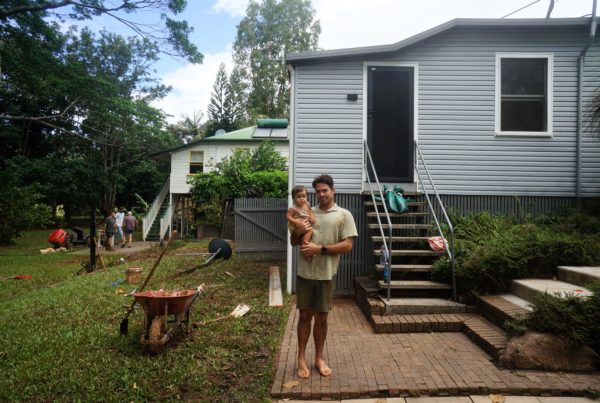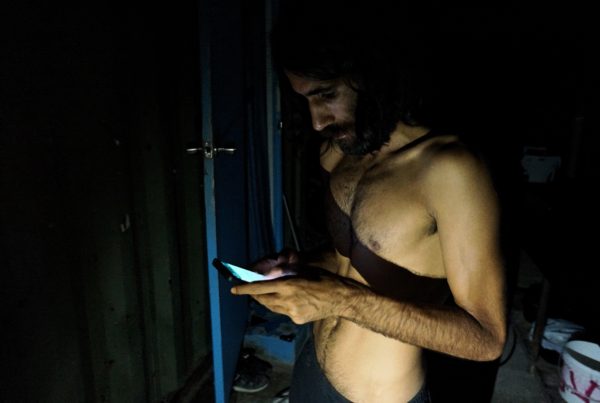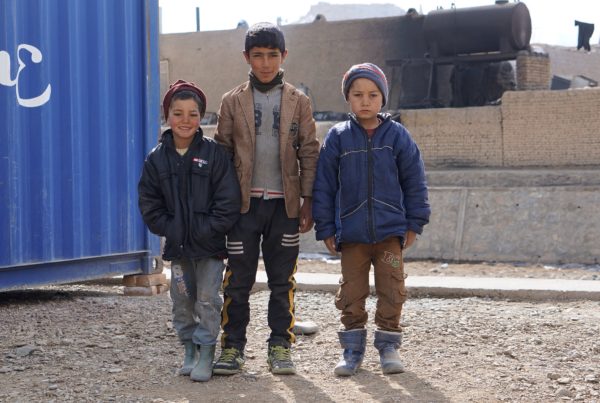On April 26, the Supreme Court of Papua New Guinea handed down a long-awaited verdict in a case concerning the legality of Australia’s immigration detention center on Manus Island. Because the 850 male asylum seekers held there did not arrive in Papua New Guinea of their own volition, they had not broken immigration law, the court ruled; keeping them in indefinite detention, where they face frequent acts of violence and suffer from poor health care, therefore, violated their constitutional protections. The next day, Peter O’Neill, the prime minister of Papua New Guinea, announced that the Manus Island detention center would be closed, and that his government would ask Australia “to make alternative arrangements for the asylum seekers currently held at the regional processing center.”
Canberra was unmoved. On the day of the court ruling, Australia’s immigration minister, Peter Dutton, emphasized that his government would not accept refugees from Manus, since it “was not a party to the legal proceedings” in Papua New Guinea. In his remarks, Dutton echoed the terms of the agreement struck on July 19, 2013, between Canberra and Port Moresby, which mandated that people seeking asylum in Australia and found in Australian waters would be transferred to Papua New Guinea, along with “any other participating regional … states.” Those housed in the Manus Island Regional Processing Center who were “found to be refugees,” Dutton said, could resettle in Papua New Guinea. The rest “should return to their country of origin.”
Based on its geographical location, Australia seems an unlikely destination for refugees, particularly those from places as far-flung as Sudan, Afghanistan, Myanmar, and Iraq. And yet, tens of thousands of people have made the journey. These people often enlist the help of smugglers to make the dangerous journey — usually from Indonesia, though others come from Sri Lanka or, in rare cases, India — to Australia via overcrowded, rickety fishing boats. Since 2000, there have been approximately 1,909 recorded deaths of people trying to come to Australia by boat.
People have sought refuge in Australia via boat since the Vietnam War. But only since 1992 has the government — both the traditionally center-left Labor Party and the center-right Liberal Party — opted for a deterrence system. In plain terms, this policy seeks to prevent boat arrivals from ever reaching Australia, and instead either transfers asylum seekers to offshore detention centers or returns them to their point of embarkment.
In August 2012, then-Prime Minister Julia Gillard’s Labor government introduced the deterrence system that is currently in place, in response to an unprecedented spike in boat arrivals. Some 278 boats and 17,202 people arrived in Australian waters in 2012, more than the total number of arrivals from 2009 to 2011. From 2000 to 2011, close to 1,000 people died at sea while attempting the voyage; another 944 died in 2012 alone. Conservative members of the political opposition and the media howled that Australia was facing a border control crisis. And the solution, they argued, lay in the past.
In 1992, Prime Minister Paul Keating instituted mandatory detention without judicial review of asylum seekers arriving by boat, paving the way for John Howard’s harsh border policies later in the decade. Then, in 2001, 361 asylum seekers — mainly Afghans and Iraqis — drowned or went missing at sea attempting the voyage to Australia. In response, Howard established the first offshore detention centers in Nauru (a five-hour, 2,076-mile flight from Brisbane) and Manus Island (situated about 758 miles from Cape York, Australia’s northernmost point). In September 2001, the Howard government also directed the Australian Navy to intercept boats suspected of carrying asylum seekers and refugees who had entered Australian waters, and return them to the edge of Indonesian waters. The result: From 2002 to 2006, arrivals to Australia dropped to just 140 people and 13 boats, with no recorded drownings. Despite the apparent statistical success of deterrence, in 2008, Kevin Rudd’s Labor government closed the offshore detention facilities, after public pressure mounted over their poor human rights records.
Four years later, Gillard’s government sought to reintroduce deterrence to “save lives at sea.” Her plan, dubbed “No Advantage,” would reopen the offshore detention centers in Nauru and Manus Island. Under the plan, when boats arrived in Australian waters, they would be taken by naval or customs ship for distribution to Christmas Island Detention Center, roughly 1,000 miles from Australia’s northwest coast. From there, the first groups of asylum seekers were sent to the Nauru Regional Processing Center in September 2012 and Manus Island in November 2012.
I worked in the detention center on Nauru as an employee of the Salvation Army from September 2012 to June 2013. It is an island of about 10,000 local people; you need only 20 minutes to circumnavigate the entire country. It is an impoverished place, with a failing economy relying on foreign — mostly Australian — aid to survive. According to an Australian Broadcasting Corp.analysis, the offshore detention system cost the Australian government $828 million in the first 10 months of the 2014-2015 fiscal year.
When I arrived in Nauru two weeks after the center opened, the country was not a signatory to the U.N. Refugee Convention; that meant it had no refugee processing system. At that point, the center housed only men, although Australia’s Department of Immigration and Border Protection (DIBP) began transferring women and children there in July 2013. Nobody knew what would happen to these people — least of all these would-be refugees. They were incarcerated indefinitely in the island’s hot, humid climate, waiting interminably for a decision that might never come. No one knew where they would be sent when their detention ended. It took Australian immigration officials six months to establish a refugee processing system for Nauru, but it wasn’t until May 2014 that the first 13 asylum seekers were recognized as refugees and granted five-year temporary visas to settle in Nauru.
The lives that awaited them there were bleak: there were few jobs, little economic activity, rampant discrimination, and numerous allegations of rape and assault.
As of March 31, Australian immigration officials hadassessed 1,131 asylum seekers; 866 were found to be refugees. How many of these people are living in the Nauruan community is unclear, but according to theDIBP, there are still 468 people living in the Nauru center under “open center arrangements,” which allow them free movement around the island but still restrict them to the center at night.
I witnessed the brutal toll of detention on Nauru. Health services are under-resourced, inevitably leading to people being sent to Australia for expert treatment, usually psychiatric care. I saw a man slash himself with a broken light bulb, and witnessed another barking like a dog during a psychotic episode. I comforted men who had attempted suicide. Across the detention network, there’s a report of a sexual assault every 13 days.
For those who don’t succumb to the emotional and mental anguish of detention, the islands offer little in the way of physical protection. Reza Berati, a 23-year-old Iranian man, was killed during a riot on Feb. 17, 2014, in Manus Island — by a detention center staff member, no less. On Sept. 5 of that year, an Iranian named Hamid Kehazaei, 24, died of a treatable infection in his foot. Fazel Chegeni, an Iranian Kurd, was found dead on Nov. 8, 2015, after escaping Christmas Island Detention Center, where he had been held for 10 weeks. A coronial inquest will formally determine Fazel’s cause of death, but reports say he had been psychologically crushed by years of waiting.
These centers sit beyond the public’s awareness. Reporters are banned from entering them and are unlikely to receive a visa anyway. All complaints or concerns regarding operations within the center are directed to the DIBP. There is no independent authority overseeing procedures in Nauru or Manus Island. Because the Australian government ruled that the Australian Human Rights Commission’s jurisdiction does not extend beyond the country’s borders, the commission has been barred from the offshore detention centers. The only way for Australians to know what is happening inside the centers is if workers speak out. But these workers face up to two years in jail for breaching mandatory non-disclosure agreements. Luckily, whistle-blowers — social workers, doctors, security guards, lawyers, public servants — continue to denounce the awful practices.
Australia’s treatment of those seeking asylum has been repeatedly criticized by the U.N. Human Rights Council; Canberra was even found to be in violation of an international anti-torture convention. Prime Minister Tony Abbott’s response was to say Australians are “sick of being lectured to by the United Nations.” But the Australian government’s contempt for criticism of deterrence — both international and domestic – may finally bring about the end of the policy.
In May 2015, 10 asylum seekers and their families who had been temporarily taken to Australia for medical treatment presented a case before the High Court of Australia in which they argued that their detention on Nauru was unlawful. While they lost, the verdict earned the families a temporary reprieve from deportation back to Nauru. The Human Rights Law Center, which represented them, questioned whether Canberra had the constitutional right to detain people in other countries, or use public money to fund and run detention centers in other countries. But not long afterward, Abbott’s government, with the full support of the opposition Labor party, approved a retrospective amendment that essentially changed the law to make the government’s actions legal.
On Feb. 3, the Australian High Court upheld the government’s position, permitting the government to return 267 asylum seekers, including 37 babies and 54 children, to offshore detention. Among them was a boy who was allegedly raped on Nauru, and 12 women who have been seriously sexually assaulted or suffered serious sexual harassment in the detention center.
The verdict galvanized Australia. Across the country, thousands of people gathered in public spaces demanding the government let the asylum seekers stay. The Uniting and Anglican churches and cathedrals invoked the ancient Christian tradition of offering sanctuary to people who feared deportation to Nauru. Doctors at Brisbane’s Lady Cilento Children’s Hospital refused to release a 1-year-old baby who’d been badly burned on Nauru, for fears the government would return her to the island. All of the state governments, except Western Australia, offered to resettle the 267 asylum seekers, rather than return them to Nauru. These families and their children have still not been returned to Nauru, but their fates hang in the balance.
Once the Manus Island facility is closed, its refugees and asylum seekers will probably be transferred to Nauru. But after that, it is unclear where will they be resettled. The tiny country can sustain only so many refugees, after all. And most of the 395 refugees in the Manus Island Detention Center have refused resettlement in Papua New Guinea. In September 2014, the Australian government agreed to a $41.43 million deal with Cambodia, a country with a dubious human rights record, to resettle refugees from Nauru and Manus Island. But two years later, only five refugees have been resettled in Cambodia.
The Papua New Guinea Supreme Court’s ruling should serve as a lesson for Australian politicians. But their response proves that the current government will do anything to uphold deterrence, no matter how much suffering it causes or how many laws it bends or breaks. Dutton will likely find a way to keep this house of cards upright probably by negotiating the transfer of the men detained in Manus Island to Nauru.
In Australia, deterrence is justified as “humanitarian” because it supposedly saves lives at sea. As a consequence, willful atrocity has become the status quo. The inhumane treatment at the detention centers is no accident; it’s exactly the point. Cruelty and isolation have become Australia’s strategy.


